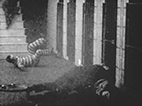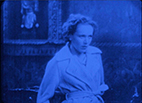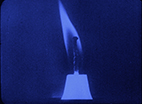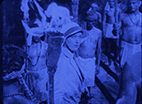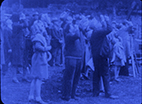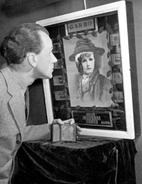The Enigmatic Cinema of Joseph Cornell, Pt. 2 - Joseph Cornell
- Unseen Cinema Collection |
- 1936-1943 |
- 23 minutes |
- COLOR/B&W |
- SOUND
Rental Format(s): Digital File
Artist Joseph Cornell made not only collages and box constructions but startlingly original films from his collection of newsreels, travelogues, industrials, nature documentaries, features, and comic shorts. Beginning in the 1930s, he fabricated source materials gathered from dealers and flea markets into "film-collages" similar in theme to his other artworks. -Jeanne Liotta/Bradley Eros
2 films:
Impossible Convicts (1905)
2:38 mins
Maker: G.W. "Billy" Bitzer
Production: American Mutoscope and Biograph Co.
Original format: 35mm silent film 1.33:1
New music: Eric Beheim
Courtesy: Paper Print Collection, The Library of Congress
Technical note: Visible artifacts reflect duplication of original 35mm paper print.
The prisoners and prison guards shuffle backwards in real time are photographed in reverse motion to appear moving forward in projection time. But it keeps switching and humorous results ensue. Thus, forming a visual conundrum - forward or backwards? The early trick film genre fascinated Cornell to no end, and the oddly comedic movements align with his much-shared interest with the surreal. -Bruce Posner
Rose Hobart - The Eclipse, blue filter version (c. 1936-44)
19:43 mins
Co-makers: Joseph Cornell, mostly copied from George Melford's East of Borneo (1931)
Original format: 35mm and 16mm sound and silent film 1.37:1 16fps
Music: Nestor Almaral and His Continentals, selections from 1957
LP record: "Holiday in Brazil"
"I prefer the deeper blue one" wrote Joseph Cornell on a label attached to the inside lid of a film can that held a 16mm black and white film know today as Rose Hobart. In the can was a 400-foot projection reel made up of three circular hubs, and sitting in each hub was a different piece of deep blue glass, each in varying shades of color. Another label on the inside lid of the film can stated in Cornell's hand-writing the title The Eclipse, an obvious reference to the solar event pictured at the beginning and end of the movie. The film was a gift given among other artworks - boxes, collages and films - to Pittsburgh art gallery director Betty Raphael following a one-man exhibition at her Outlines Gallery in 1944, with which he supplied her with 78rpm records to play along the films, but none seem to survive. -Bruce Posner
Artist Joseph Cornell (1903-1972) lived his entire adult life in Queens, New York, where he worked in his basement studio making collages, box constructions, and films. Though rarely exhibited publicly, he loved to screen films at home for his invalid brother Robert, and would often re-edit them for his own amusement. -Jeanne Liotta/Bradley Eros


